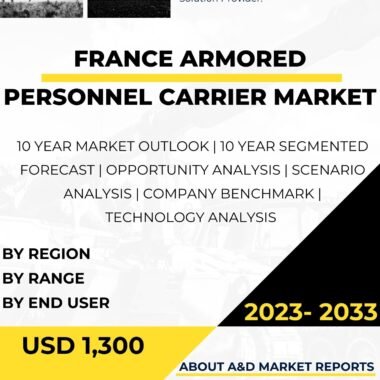Description
The Active Protection Systems (APS) market in Malaysia has gained significant attention and importance in recent years due to evolving security challenges and the need to modernize the nation’s defense capabilities. Active Protection Systems are advanced technologies designed to protect military platforms, such as armored vehicles and tanks, by detecting, tracking, and neutralizing incoming threats like anti-tank missiles and rockets. Malaysia’s geographical location and geopolitical environment make it crucial to have robust APS solutions to ensure the safety of its military assets and personnel.
As Malaysia strives to maintain regional stability and counter potential threats, investing in cutting-edge defense technologies, including APS, has become a priority. The APS market has witnessed significant growth as the Malaysian Armed Forces seek to enhance their combat effectiveness and stay ahead of adversaries with more sophisticated weaponry.
One of the primary drivers behind the growth of the APS market in Malaysia is the increasing adoption of modern armored vehicles by the military. As these platforms become more advanced, they also become more vulnerable to emerging threats like precision-guided munitions. Active Protection Systems provide a layer of defense that complements traditional armor and countermeasures, significantly increasing the survivability of these armored vehicles on the battlefield.
Additionally, the growing emphasis on asymmetrical warfare and urban combat scenarios necessitates the deployment of APS systems. Traditional static defenses and passive armor may not be sufficient in these complex environments, where threats can come from unexpected angles and positions. APS offers a dynamic and active defense approach that can respond rapidly to incoming threats, reducing collateral damage and potential harm to non-combatants.
Moreover, the proliferation of advanced anti-tank guided missiles (ATGMs) in the region has further fueled the demand for APS in Malaysia. These highly effective and relatively low-cost munitions pose a significant threat to armored vehicles, making APS systems a critical requirement for military forces operating in contested areas.
Malaysia’s focus on indigenous defense capabilities has also stimulated the development and adoption of APS technologies. The government’s commitment to promoting local research and development in the defense sector encourages partnerships between domestic and international defense companies, leading to the transfer of technology and expertise in APS.
As the APS market in Malaysia expands, collaborations between the government and defense industry players have increased. These partnerships foster innovation, promote technology sharing, and allow for the customization of APS solutions to meet specific operational requirements.
Furthermore, Malaysia’s active involvement in peacekeeping missions and humanitarian operations necessitates advanced protection systems for its military assets. APS not only enhances the survivability of armored vehicles during combat missions but also ensures the safety of personnel involved in these peacekeeping efforts.
However, challenges persist in the APS market in Malaysia. One major obstacle is the high cost associated with procuring and integrating APS technology into existing military platforms. Budget constraints and competing defense priorities can make it challenging to allocate resources for APS acquisitions.
Additionally, the constant evolution of threat landscapes and emerging weapon technologies requires continuous upgrades and improvements in APS systems. Ensuring the compatibility and interoperability of APS across various military platforms poses technical challenges for defense integrators.
Furthermore, ensuring the cybersecurity and resilience of APS systems against potential cyber-attacks and electronic warfare threats is paramount. As APS systems rely on advanced sensors, software, and data communication, they become potential targets for malicious actors seeking to exploit vulnerabilities.
In conclusion, the Active Protection Systems market in Malaysia is experiencing significant growth as the nation recognizes the importance of modernizing its defense capabilities. The adoption of APS technology enhances the survivability and combat effectiveness of armored vehicles, offering a dynamic and active defense approach against emerging threats. Malaysia’s focus on indigenous defense capabilities and collaboration with international defense companies fosters innovation and technology transfer in the APS sector. However, challenges related to cost, technical integration, and cybersecurity must be addressed to ensure the successful deployment and operation of APS systems. By addressing these challenges, Malaysia can continue to strengthen its defense posture and contribute to regional security and stability.




